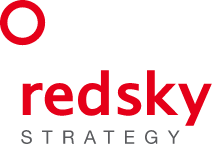News
The New Back To School: How to (Re)Become a Learning Organization

Over the past few years, virtual working environments are becoming more popular, a trend that took full effect upon the early COVID lockdowns of 2020. While the digitized workplace offers convenience in many areas, it isn’t without its challenges—especially when it comes to learning and development (L&D).
With fewer in-person training sessions and less group collaboration outside of day-to-day work, L&D opportunities are not as accessible as they once were. With training playing such an essential role in growing companies and team members’ skills, it is important to consider how the virtual/hybrid work environment has changed marketing excellence.
To explore how L&D training impacts marketing excellence, it’s helpful to first understand what it is. Marketing excellence allows marketers to best serve brands and consumers (insights, learning, better understanding data, etc.). It builds world-class brands by teaching an iterative process to ensure that:
- Everyone speaks the same language
- Marketing fundamentals are aligned across marketing teams with different backgrounds
- Science and art are added to the marketing process
A marketing excellence framework also adds accountability and measurements into the process.
When it comes to learning and training in a largely virtual workspace, many companies face challenges. It can be difficult to conduct training remotely, and geographically distanced teams may struggle to coordinate in-person training. Growing economic concerns and fears of an impending recession have also put learning on the back burner as teams focus on completing their work with fewer employees.
Marketing Skills and Training Trends
Brands still have a l a need for marketers with strong skills to build brand equity and consistency. With fewer people and more work to be done, increased skills are essential for today’s marketers. It requires employees to work smarter, not harder.
According to a Capterra survey, “[h]igh turnover stemming from The Great Resignation has prompted companies to significantly increase their L&D budget in 2022.” In fact, nearly half of organizations are increasing L&D spend this year, marking a near 10% uptick since 2021.
McKinsey research has found:
- Only one-third of executives and managers say their companies are prepared to handle the workforce disruptions arising from technology and market trends
- 87% of respondents are either currently experiencing skills gaps or expect to within the next five years
A recent study by MarketingProfs on B2B marketing training found that the skills required for marketing professionals are rapidly changing, and that less than 20% of respondents feel they’re prepared for their future in marketing, which demonstrates a need for training.
There are a handful of reasons why many companies no longer invest in marketing training. Limited budgets, fewer employees, slow returns to work, and pre-pandemic processes falling to the wayside can all be attributed to marketing training taking a back seat.
However, there are additional factors at play. According to MarketingProfs, few companies are proactive about their marketing training, with most lacking a process to determine what training is needed. Half of non-managers aren’t sure if their company has a B2B marketing training budget at all.
In addition, of the marketers surveyed:
- Only 15% have training assessments in place to determine which skills their teams need to learn next
- 24% say not everyone on their team has a general understanding of marketing
- One-third don’t have documented business goals
- Half want training to be focused more on execution rather than just theory
- Many want to see more self-paced online training courses versus virtual events, workshops, or in-person conferences
This is concerning for a number of reasons. It’s important for team members to be on the same page regarding business and marketing objectives, which means being able to speak the same ‘language’, particularly when it comes to things such as branding and segmentation.
Tips for Implementing Marketing L&D Training
Now more than ever it’s important to continue to build skills and conduct internal training. There are a few tips and techniques marketing teams can utilize to help make L&D training initiatives a success.
The first is to recognize the various adult learning styles and create training that is geared toward each one. Adults learners typically fall into one of four categories:
- Activists learn through doing, problem-solving, and new experiences. They enjoy practice examples, competitive games, etc., but don’t like repetitive activities.
- Reflectors tend to be thorough and methodical in their approach to tasks. They learn best through watching and observing examples and often need time to absorb and ponder over information presented to them.
- Pragmatists often excel through abstract thinking and doing. They prefer finding a clear link between subjects and the job and want to try new things immediately. They enjoy learning about how things work and testing and using them.
- Theorists learn through watching and abstract thinking. They’re rational, objective, and like to ask a lot of questions about the theory. They want to understand what’s behind the principles of concepts and need to be in structured situations with clear purpose.
For each of these adult learning styles, it’s helpful to have specific aspects of training programs that address their particular preferences. For instance:
- Team exercises for activists
- Action planning for reflectors
- Books for pragmatists
- Few but key conceptual models for theorists
At RedSky Strategy, we offer tailored training focused for marketers and non-marketers alike. Our RedSky Strategy Marketing Excellence Training is designed to equip brands and team members with the tools and frameworks needed to shift their perspectives and view marketing challenges through a different lens. We help companies identify and implement more meaningful strategies and ultimately leverage content designed for multiple learning styles to increase engagement and actionability, and ultimately drive growth.
Are you interested in working with RedSky Strategy? We look forward to helping you implement training initiatives to help boost your marketing initiatives and execution.
